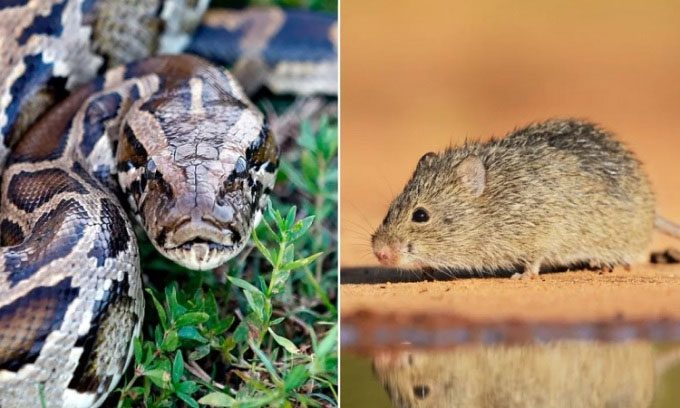Burmese Python Threatens Natural Enemies of Rodents, Allowing Their Proliferation in the Everglades.
The Burmese Python is enabling rodents to dominate many areas in Florida’s Everglades by eliminating their traditional predators, according to research published in the journal Mammalogy. The increase in rodent populations could disrupt the already fragile ecosystem and heighten the risk of disease transmission to humans, Live Science reported on June 5.

Burmese Python and Cotton Rat. (Photo: Rhona Wise/Danita Delimont).
The Burmese Python (Python bivittatus) was first discovered in Everglades National Park in 1979. Its population skyrocketed in the 1980s and 1990s, and there are now tens of thousands of pythons living in the Everglades. Over the past 40 years, they have decimated many native animal populations, including bobcats, rabbits, and foxes.
However, smaller mammals appear to be unaffected by the presence of Burmese Pythons, including the Cotton Rat (Sigmodon hispidus). To assess the impact of the Burmese Python on this species, researchers captured 115 cotton rats and fitted them with tracking devices—34 in a low-python area and 81 in a high-python area. They monitored the rats twice daily and recorded evidence of predation whenever a rat died. In cases where rat remains were likely consumed, the team analyzed rat DNA found in the feces and regurgitated remains.
The research team’s findings indicated similar mortality rates for rats in both areas. Although pythons killed 6 tracked cotton rats, their overall impact on rat populations was minimal. However, because pythons severely affect larger mammal populations such as bobcats and foxes, this creates an ecological void for rodents to invade. Consequently, in high-python areas, cotton rats are now dominating communities, according to study author Robert A. McCleery, an associate professor of wildlife ecology and conservation at the University of Florida.
The decline of medium and large mammal populations in the Everglades disrupts crucial ecological processes such as nutrient cycling and decomposition. Rodents cannot fulfill the ecological roles of the vanished mammals. Their dominance also poses a potential risk of transmitting diseases to humans. Cotton rats are reservoirs for viruses that can infect humans, such as the Everglades virus (EVEV) and hantavirus.


















































